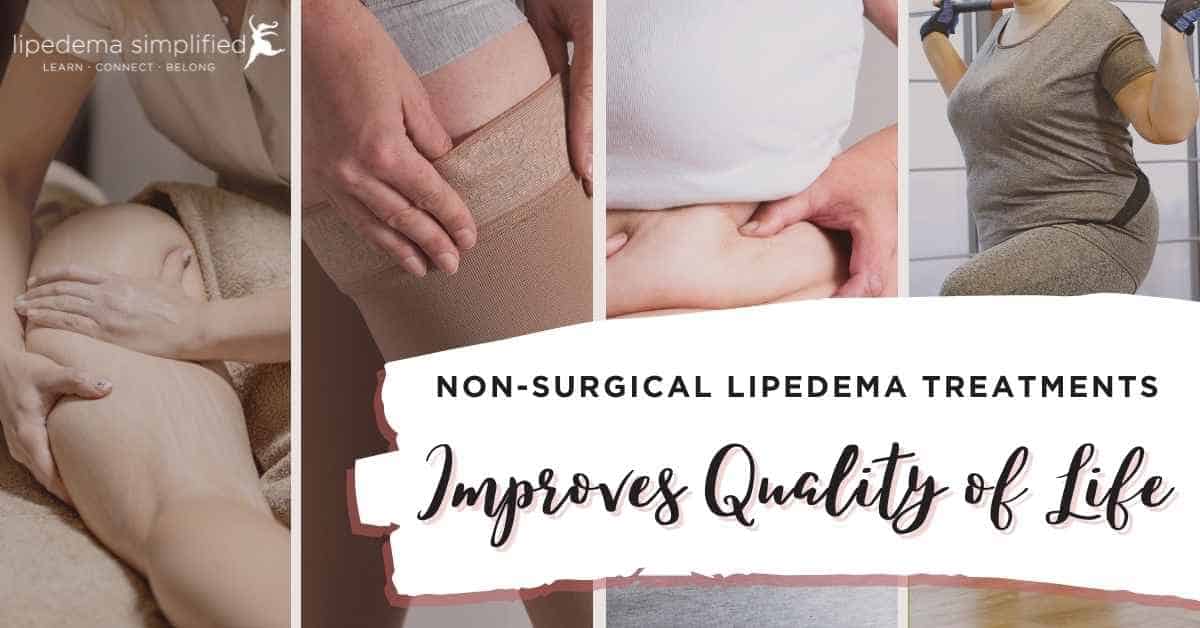
For today I’d like to feature a study by Dr. Alexandre Amato, a surgeon in Brazil. The research paper is called Lipedema Can Be Treated Non-Surgically: A Report of 5 Cases. It was published in the peer-reviewed journal American Journal of Case Reports in November 2021. This article was forwarded to me by Dr. Gabriele Faerber and we both found it interesting that a surgeon was promoting non-surgical strategies for treating lipedema. We were also interested because Dr. Amato was a speaker at our Innovative Solutions for Lipedema & Lymphedema symposium in October 2021.
Objectives of Treatment
Dr. Amato shares 5 case studies of women in each of stages 1 through 4 of lipedema. He describes how they presented at the initial evaluation, the details of the non-surgical treatment options that were pursued, and the treatment outcomes for each case.
Dr. Amato states that it’s important to collaborate with each patient to define the goals of treatment. Goals can vary widely, but commonly they will include:
- Symptom improvement
- Weight/fat loss
- Reduction in limb volume
- Improvement in mobility
- Improvement in cosmetic appearance
- Prevention of progression of the condition
Analysis and Monitoring of Each Patient
Dr. Amato discusses the importance of using good tools for the analysis and monitoring of each patient with lipedema. We need to be able to objectively quantify clinical progression in order to more accurately report the response to various treatments and interventions. Dr. Amato uses the Lipedema Symptom Assessment Questionnaire, which has been validated and culturally adapted. He also recommends performing volumetric measurements of limbs and using bioimpedance to determine body fat and fluid composition. He said that it’s unfortunate that we have “no tool to measure the aesthetic aspects” of lipedema.
The Top Priority in the Treatment of Lipedema
Dr. Amato believes that the top priority in the treatment of lipedema should be “the recovery and preservation of mobility.” Secondarily, we should focus on improving symptoms, reducing limb volume, making aesthetic improvements, and hopefully decreasing psychological impacts.
Similar non-surgical interventions were used in each of the cases presented. These included: an anti-inflammatory low carbohydrate or in some cases, ketogenic diet; manual lymph drainage; antioxidant supplementation; and moderate exercise. Despite the stage of lipedema, these treatments were very successful in reducing symptoms and significantly improving quality of life.
Some Key Conclusions
Here are some of the conclusions that Dr. Amato presents in this paper:
“Surgical treatment should not be performed in the inflammatory phase of the disease, and the best time for decision-making is when the patient has reached the best symptomatic state.”
“In patients with lipedema with comorbid diseases such as varicose veins of the lower limbs (53% of cases) or obesity (50% of cases), failure in the clinical treatment of lipedema may cause failure in the treatment of the associated disease.”
“lipedema requires an integrated multispecialty and multidisciplinary teamwork patient-centered approach. Non-surgical treatment of lipedema is feasible in selected areas, and it can meet the criteria for achieving selected clinical objectives.”
Takeaways
This paper is important for women with lipedema because it gives hope to women who may not be able to use surgical intervention. Dr. Amato demonstrates that non-surgical interventions can be very successful in treating and managing lipedema.
Be sure to check out Lipedema Simplified’s Flash Briefings – it’s our mini-podcast for daily tips, tools, and research about lipedema.
~ Leslyn Keith, OTD, CLT-LANA
Board President, Director of Research | The Lipedema Project
